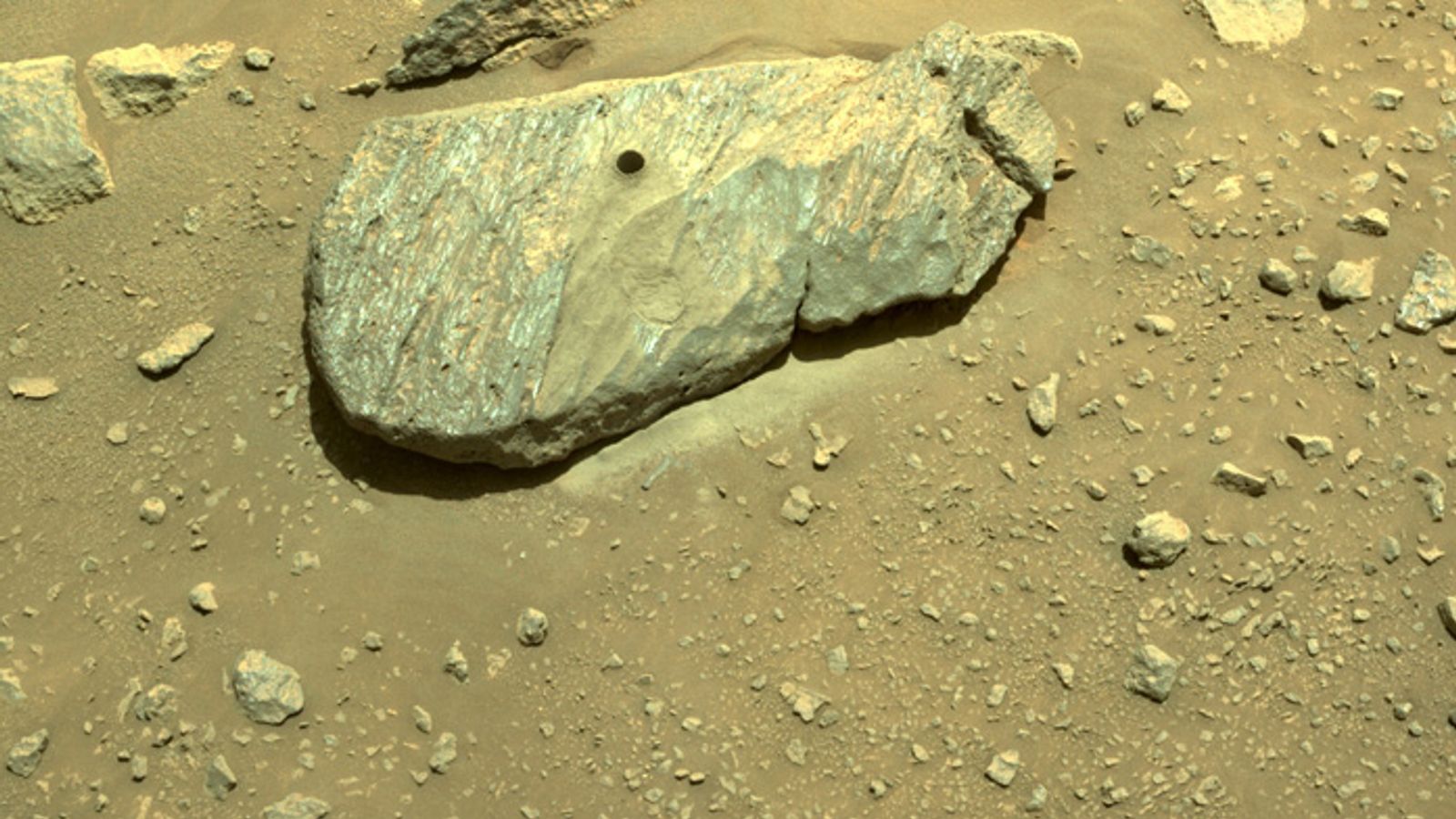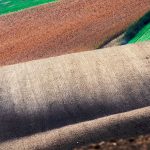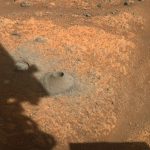NASA’s Perseverance rover appears to have succeeded in its second attempt to collect a rock sample from Mars as part of the search for signs of ancient life on the planet.
The space agency announced that initial images downlinked from the rover show an intact sample in the tube, although poor sunlight conditions meant that subsequent images were inconclusive.
NASA said that another round of images with better lighting will be taken to confirm that a sample has been captured before processing, following the failed first attempt.
Perseverance targeted a briefcase-sized rock for the sample and is believed to have succeeded this time around.
However after the first image was taken, the rover performs a procedure called “percuss to ingest” which vibrates the tube to clear the lip of any residual material.
“The action can also cause a sample to slide down farther into the tube,” the agency explained, which meant that in the poorly-lit images the internal portions of the tube which may contain the sample were not visible.
“The project got its first cored rock under its belt, and that’s a phenomenal accomplishment,” said Jennifer Trosper, project manager at NASA’s Jet Propulsion Laboratory in Southern California.
“The team determined a location, and selected and cored a viable and scientifically valuable rock. We did what we came to do. We will work through this small hiccup with the lighting conditions in the images and remain encouraged that there is sample in this tube.”
The rover is equipped with a two-metre-long robot arm which has a hollow coring bit and a percussive drill at the end of it to extract samples from beneath the Martian surface.
Over the course of the mission about half a kilogramme in rock and soil samples are intended to be cached in large titanium tubes that the rover will leave on the planet to be collected by a yet-to-be-confirmed future mission.
The point of landing in the Jezero crater was to drill deep down into the sediment of where an ancient river once flowed to check for the remnants of microbial life.
The carefully selected samples of Martian rock and soil wouldn’t be analysed immediately but instead the rover will be cached and collected by another rover in approximately a decade’s time.
NASA and the European Space Agency are planning a Mars sample return campaign, where these samples can be examined with instruments that are far too large and complex to send to Mars.
“Detailed maps will be provided for any future mission that might go to Mars and pick up these samples for study by scientists,” NASA said at the time.






















